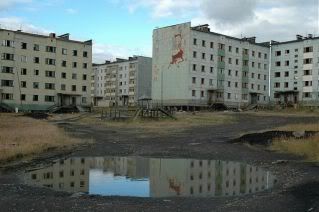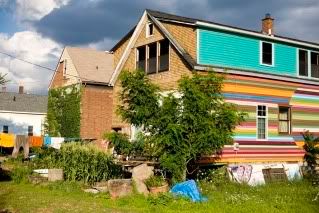
Kadykchan is a Russian city located way the hell up in the Siberian peninsula, where the winter air temperature could drop below -40 degrees Celsius. In spite of these conditions, the city had a population of around 10,000 in 1986, when it was a tin-mining town for the Soviet Union. But when a pipe burst in the city's central boiler house, the whole city lost heat and everyone quickly evacuated-- and between this and the decline of its tin mines after the fall of the USSR, Kadykchan never recovered. As of 2008 the population was estimated to be less than 300 people; the city is still full of the abandoned possessions of those who fled.
For more photos, see this post on the impressive Russian blog Brusnichka, which seems to be dedicated largely to exploring and photographing abandoned bits of Russia (and there's even more up on English Russia). I linked Brusnichka's photos from an abandoned Russian army neuroscience lab here almost a year ago (my second post here, in fact) but never thought to explore the site in more depth. Like most of Russia, the site now seems to be abandoned-- but what remains of the content is beautiful. I like this this and this for starters.


